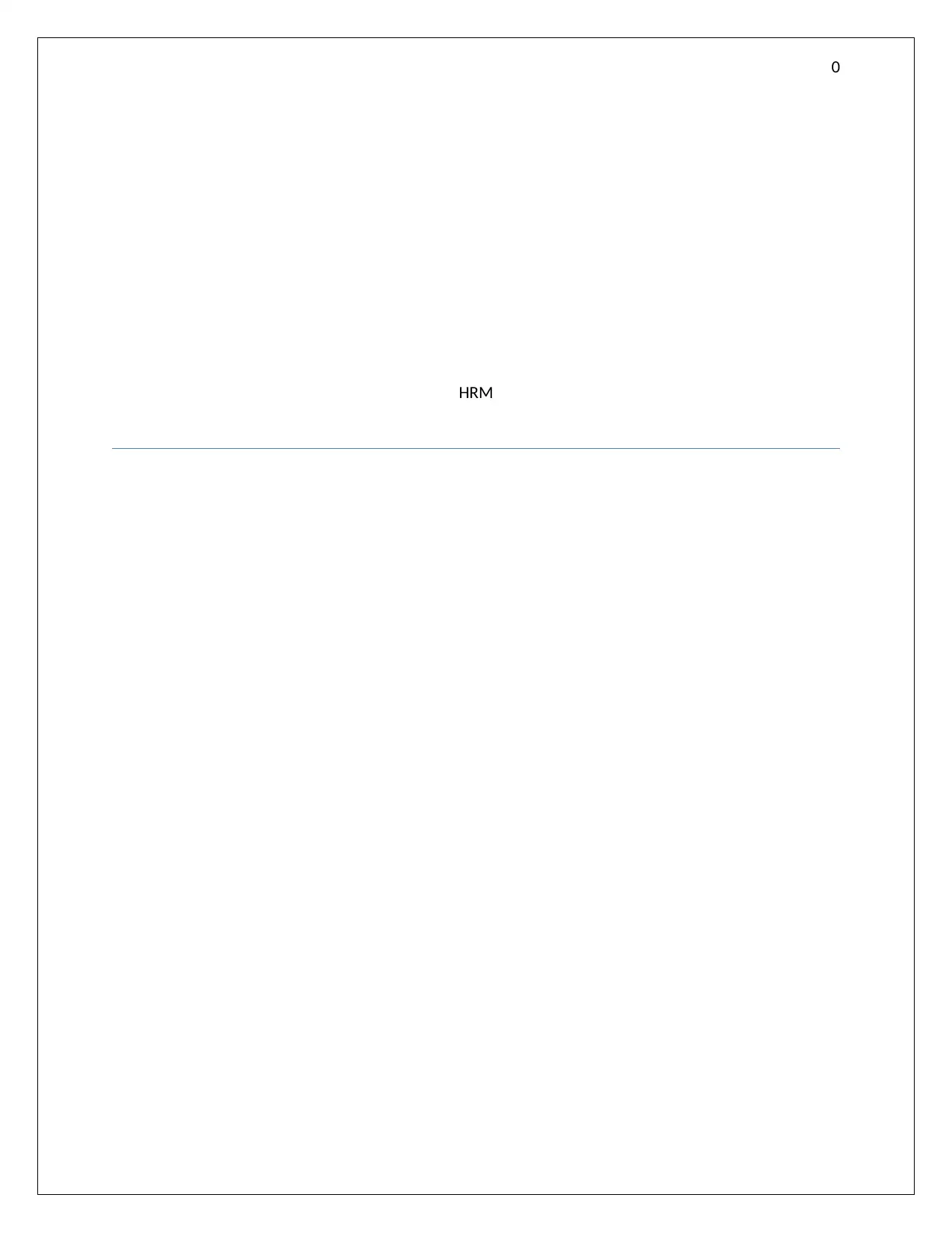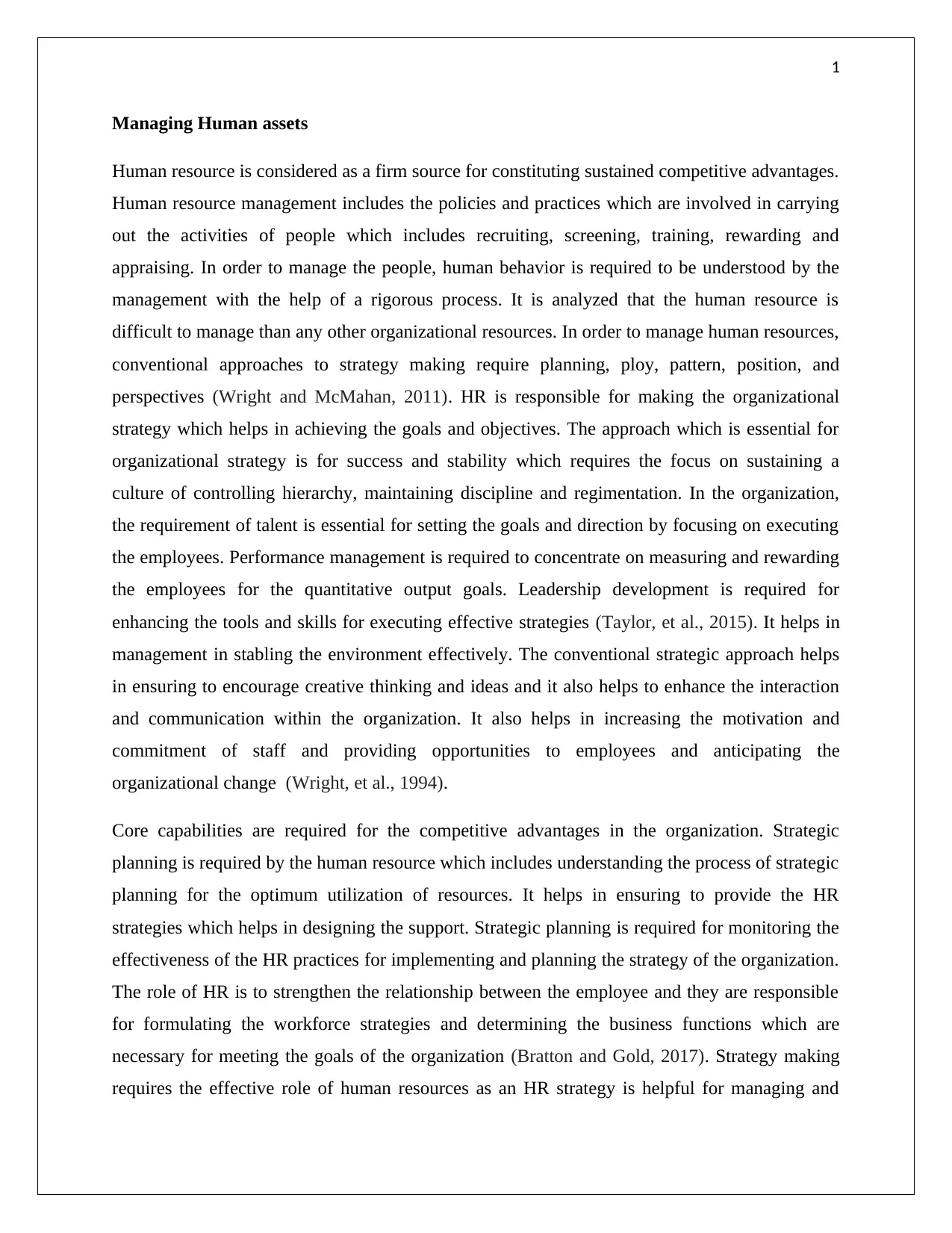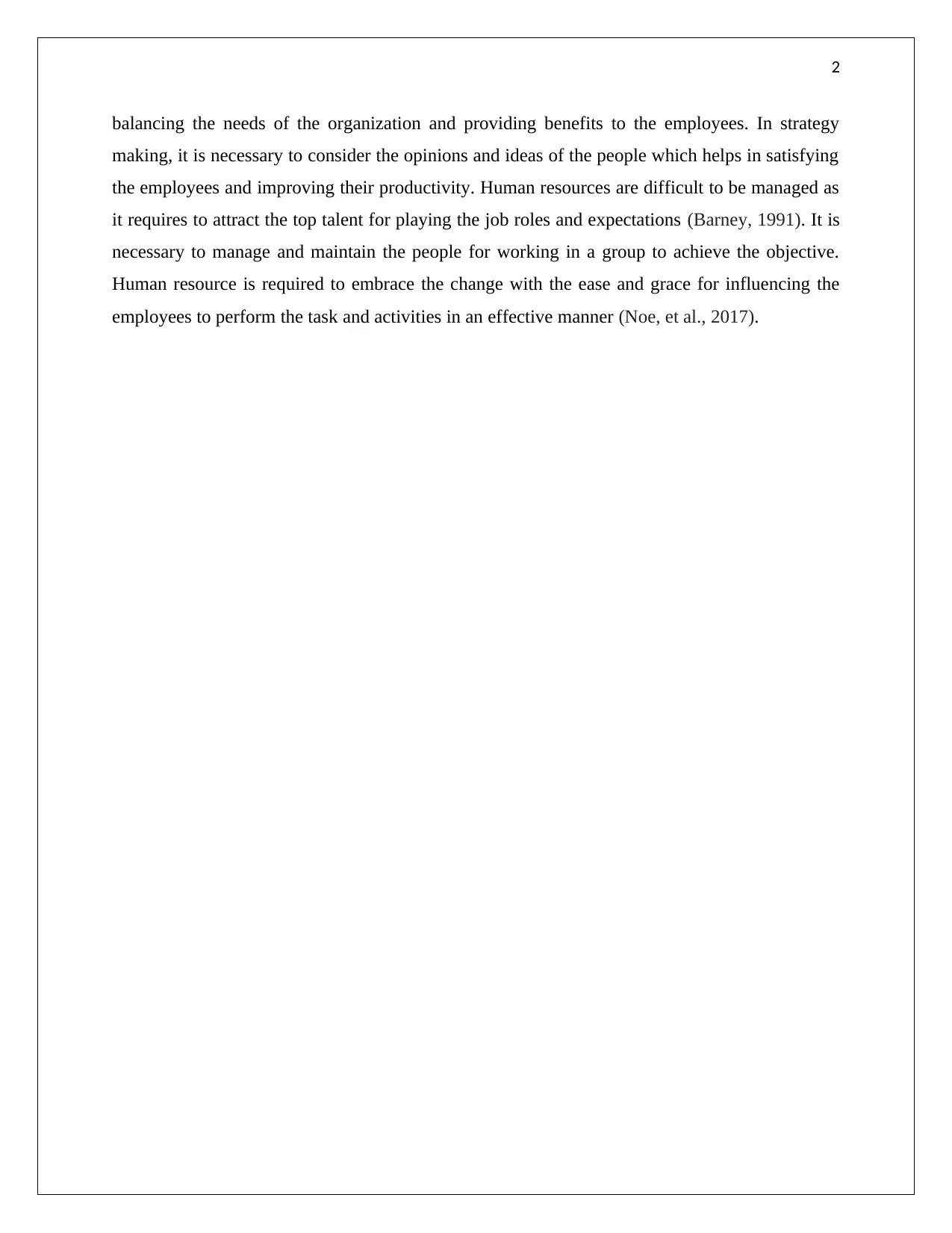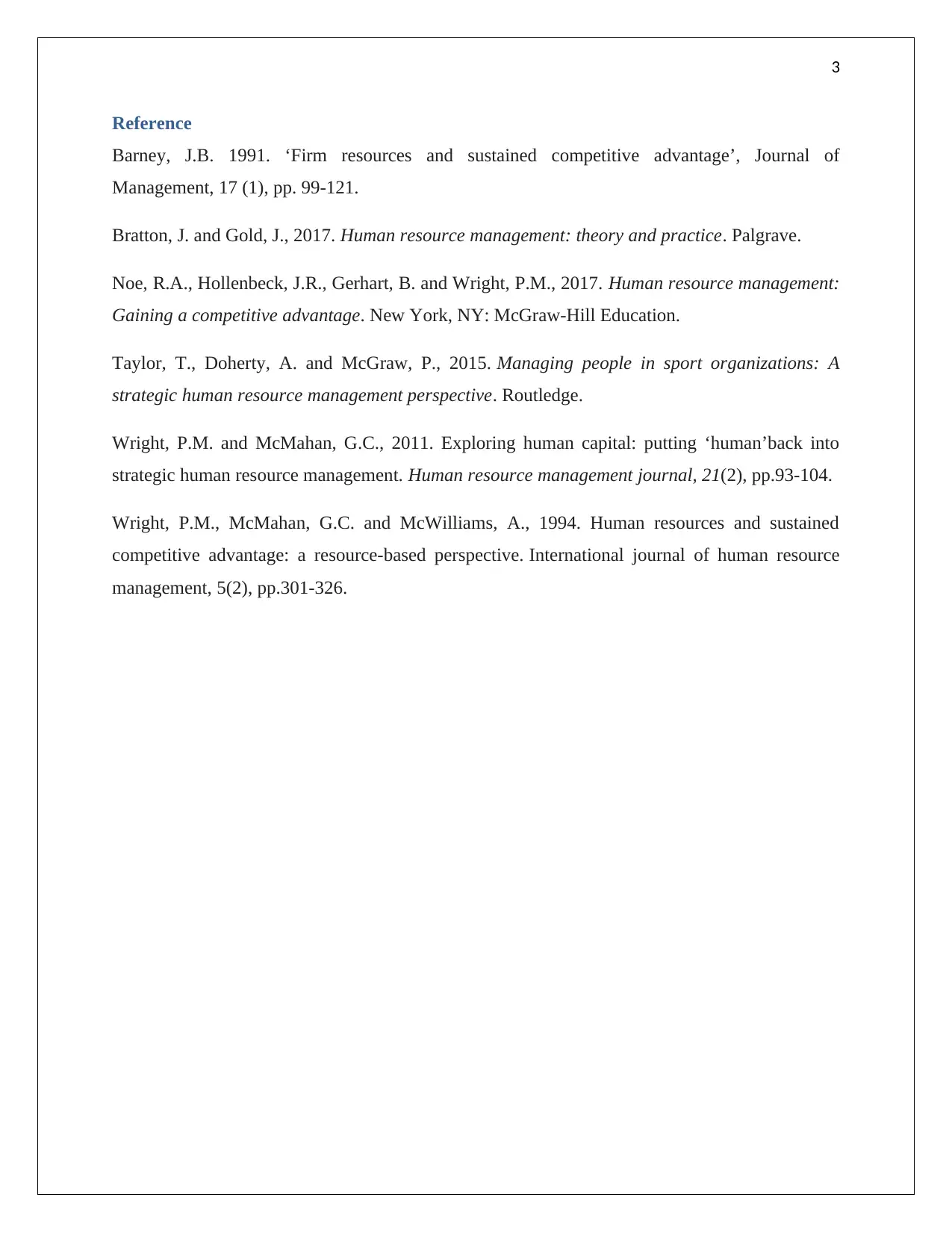HRM: Conventional and Alternative Strategies for Human Assets
VerifiedAdded on 2022/08/28
|4
|748
|24
Essay
AI Summary
This essay examines the critical role of human resource management (HRM) in achieving sustained competitive advantages, focusing on the complexities of managing human assets within organizations. It explores conventional approaches to strategy making, emphasizing the importance of planning, and the need for a culture of control and discipline. The essay highlights the significance of talent management, performance management, and leadership development in executing effective strategies. It then analyzes the importance of core capabilities and strategic planning in HRM, discussing how HR strategies support organizational goals and balance the needs of both the organization and its workforce. The essay also considers the challenges associated with attracting and retaining top talent, and the need for organizations to embrace change to influence employees effectively, drawing on key academic references to support its analysis.
1 out of 4











![[object Object]](/_next/static/media/star-bottom.7253800d.svg)